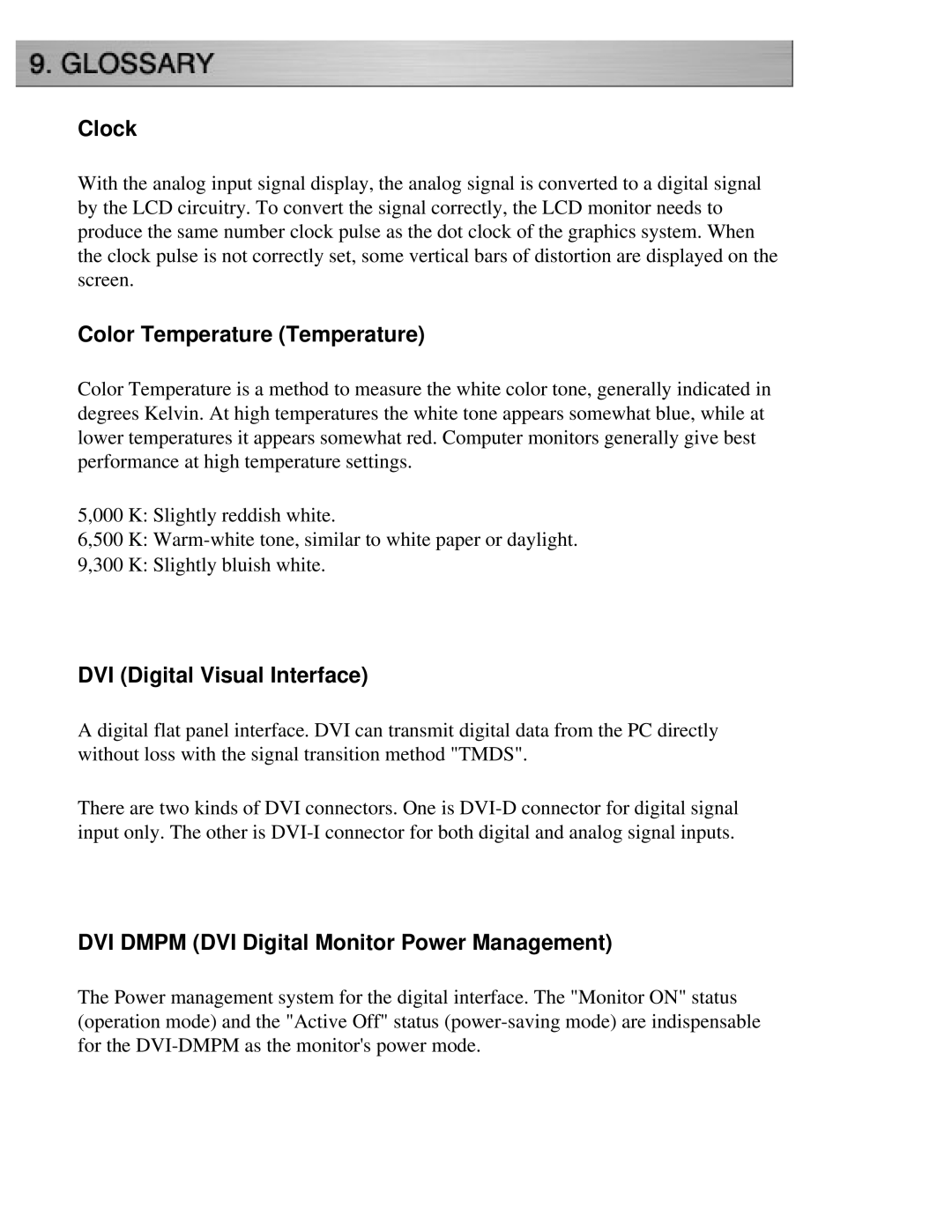CG221 specifications
The Eizo CG221 is a high-performance color monitor designed specifically for professionals in fields such as photography, graphic design, and video editing. Renowned for its exceptional color accuracy, the CG221 boasts a range of features and technologies that make it a standout choice for those who require precise color reproduction.One of the primary features of the Eizo CG221 is its 21.3-inch LCD display, which incorporates a 10-bit color depth, enabling it to display over a billion colors. This wide color gamut is critical for professionals who need to ensure that their work translates accurately between different devices and mediums. The CG221 supports a variety of color spaces, including Adobe RGB, sRGB, and DCI-P3, making it versatile for different applications.
Color calibration is a vital aspect of achieving accurate color representation, and the CG221 is equipped with Eizo's ColorNavigator software. This software allows users to calibrate the monitor easily and offers a variety of preset modes tailored for different workflows. Additionally, the monitor features a built-in sensor that can perform automatic calibration at specified intervals, ensuring consistent color performance without the need for ongoing manual adjustments.
Eizo has implemented advanced technologies in the CG221 to enhance its visual performance. With its LCD panel using in-plane switching (IPS) technology, users benefit from wide viewing angles of up to 178 degrees, ensuring that colors remain consistent from various perspectives. The monitor also features a matte surface to reduce glare and reflections, making it an excellent choice for bright working environments.
Another critical characteristic of the CG221 is its resolution, with a 1920 x 1200 native resolution that provides ample screen real estate for multitasking and detailed viewing of images. The monitor also supports various connectivity options, including HDMI, DisplayPort, and DVI, allowing for seamless integration with different systems.
In summary, the Eizo CG221 is a remarkable monitor tailored for color-critical work, featuring exceptional color accuracy, multiple color space support, robust calibration options, and advanced display technologies. Its combination of these features makes it indispensable for professionals who demand the highest quality in their visual projects.
